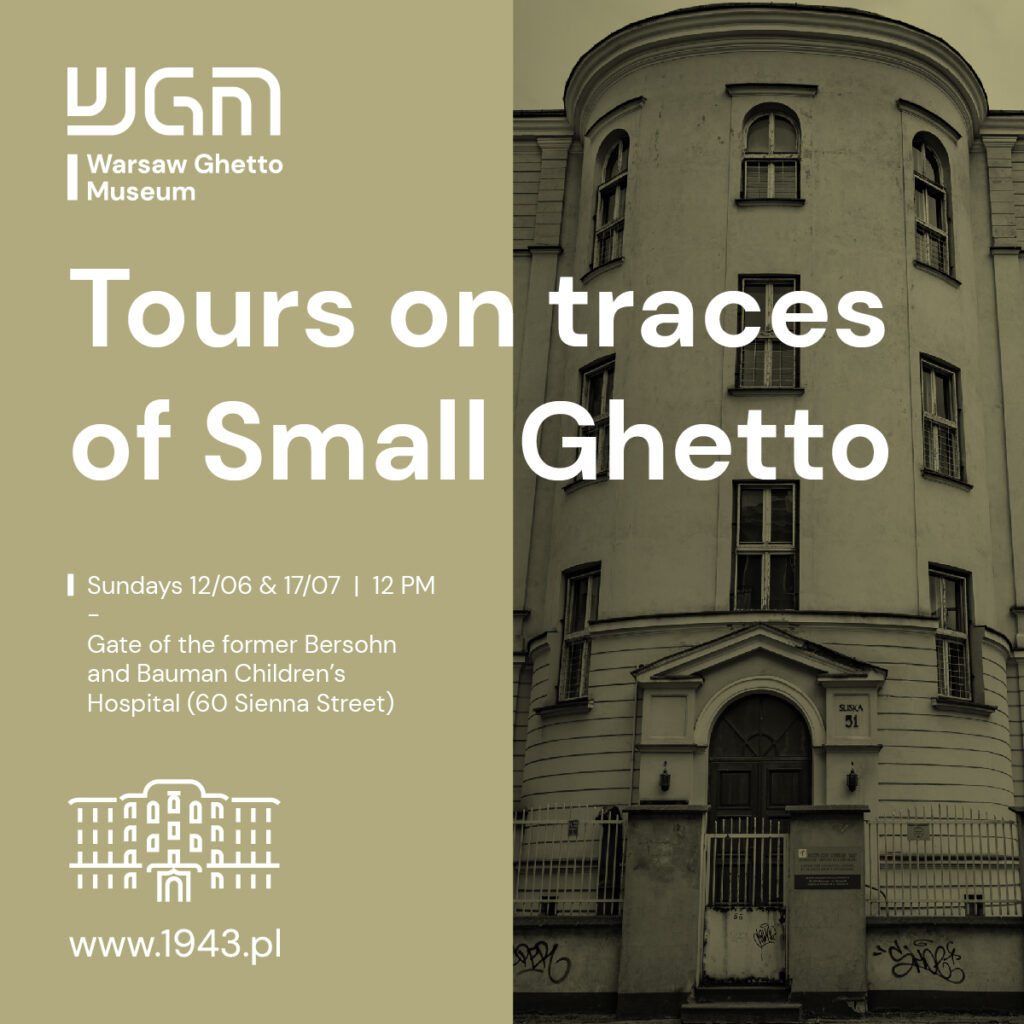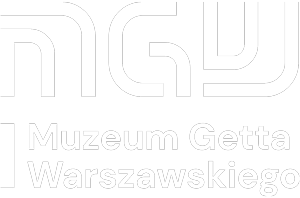Tour on traces of Small Ghetto

- Sundays 12/06 & 17/07 | 12 PM
- duration time: approximately 150 minutes
- gate of the former Bersohn and Bauman Children’s Hospital (60 Sienna Street)
Guided tour covers selected points in topography of the former area of Ghetto in Warsaw – a significant part of it, called Small Ghetto. Starting point is gate of former Jewish Children Hospital (Bersohns&Baumans families’ Hospital) at Śliska Street 60 – future headquarters of Warsaw Ghetto Museum; we will visit grounds of the hospital also.
Then as follow: the remains of Ghetto Wall – between Żelazna and Śliska streets; place of Norblin Plant, site of some factories (so called “shops”), active in Ghetto between Summer 1942 and Spring 1943 – at Prosta and Żelazna streets; remains of apartment quarters – at Waliców and Pereca streets, and Żelazna and Krochmalna streets; places of one of the most important gates of Ghetto – at Żelazna and Grzybowska streets, and of famous and notorious wooden bridge connecting so called Small and Big Ghetto over Chłodna street; a tenement house “Under Clock” at Chłodna street – where a part of elite of Ghetto residents lived (among them – Adam Czerniakow, chairmen of Judenrat/Jewish Board); place of former Biała street – one of important connections between Ghetto and “Aryan site”; Mirów-Market halls – important place of food smuggle to Ghetto; place where until 1945 stood the building-seat of Judenrat – at Grzybowska street; the only one survived historic Synagogue, Nożyk Family’s Synagogue – at Twarda street; and as a last stage – Grzybowski Square, one of the hearts of pre-war Jewish district, during the War – a place of existence of small community of Jew-Christians connected with All Saints Church, and a place adjoining to survived block of apartment houses at Próżna street.
This stages will be a kind of reference points to narration about selected aspects of history of pre-war Warsaw’s Jewish Community and Warsaw Ghetto during the war, as: administration, religion, health care, food supply, trading, employment, culture, common life and death and also the politics of memory/oblivion about Ghetto after the War. The content of actual outdoor temporary exhibition of the Museum on Grzybowski square also will be reported. The guide will be Dr. Paweł Freus – an art historian, Senior Specialist in the Research Departement of the Warsaw Ghetto Museum. Participation is free of charge. The tour will be conducted in English.
Walks under the patronage of the British Council.

